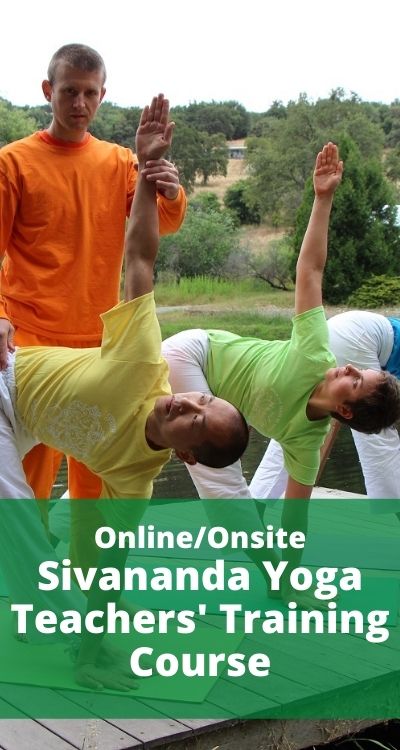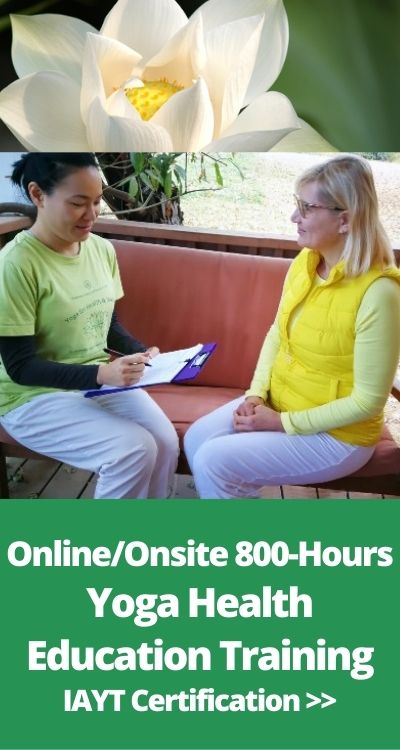Satsang webinar 3/31/2020
Introduction:
In this webinar we will be talking about Yogic classical meditation. This is the system of 8 limbs Yoga of Patanjali Maharishi, where meditation is limb number 7, and Samadhi- the state of superconscious is limb number 8. Classical Yoga (Raja Yoga) includes ethical behavior , (1) the behavior to avoid (Yamas) and (2) the behaviors to adopt (niyamas) (3) the yoga postures (asanas), (4) breathing exercises to control prana (pranayama) (5) and the turning inwards (pratyahara) as the outer steps of Yoga practice. The inner steps are (6) concentration (dharana) and (7) finally meditation (dhyana).
It is not the purpose of this seminar to talk in details about each of those steps or limbs but to focus on the understand what is meditation is and what meditation is not in order to (1) remove false preconceptions of meditation bringing confusion, fears and short term attempts and (2) to clarify what is the yogic meditation practice. It is a known fact that people associate yoga with physical exercises and not as meditation practice to calm the mind, release stress and achieve peace . In fact Yogic exercises are part of the meditation practice.
Why meditate?
In this time of uncertainty and stress due to collective effort to try to suppress the spread of the virus, governments and nations put their whole country, states, cities , under lock down modes . Normal activities are interrupted and people stay home with more time in their hands and consumed by worries and anxieties. In this time, meditation practice or the turning inwards of the mind to find recharge and new perspective about one’s life and one’s self become imperative. In this context, learning correctly meditation is necessary and removing of prejudices and preconceived ideas about meditation is helpful.
The purpose of meditation is to find inner peace.
Inner peace will lead to strength of mind and character and bring about increase capacity to remain calm under challenges .
From the capacity to remain calm , the individual will not loose him or herself in fears and panic and thus leading to wrong reactions which bring the individuals down further more and perpetuate one’s already habitual negative vision.
To know more about the mechanism of fear and anxiety and how they make you loose your capacity to be your happy and creative self , see my past talks on
the topic published in the blog www.sivanandayogafarm.org in last week satsang on the topic of fear or faith.
- Inner peace can not happen if the mind is constantly turning outwards and keep
ruminating about the past regrets or the projected fears about the future.
- Inner peace can not happen if one is worrying about our material survival only.
- Inner peace can not happen if one is lack of self confidence and is dependent of everything external to be happy and to find meaning.
- Inner peace can not happen if we do not have good relationships with self and with others, if our heart is closed and we are blaming others, judging others, if we are full of negative emotions such as anger, grief, guilt, hatred, greed, jealousy, lack of contentment.
- Inner peace can not happen if we are swayed by our insatiable desires, and in the situation like this one, when our desires and expectations can not be fulfilled, our inner peace is replaced with frustrations, resentments.
- Inner peace will not happen if one is distracted and restless, lack of concentration, when the habitual goal and motivation are being questioned ( for example when one finds oneself jobless ) and one’s schedule and habits are being changed.
- Inner peace can not happen if one is sick and lack of vitality.
- Inner peace can not happen if one is desperate, have no faith and connection with the supreme intelligence.
Meditation technique :
- Conditionning the mind, give instructions to be here and now. What is the mind? A lake, a drunken monkey, a wild horse, a shy lady, music record, a fast fan , a needle with petals, relationship mind and body, relationship mind and breath, relationship mind and senses. One thought at a time. Mind works with names and forms, works with association.
- Preparation: space time.
- Posture- erect and comfortable.
- Breath – deep and long
- Breath rhythmical and calmer and calmer till breathe becomes imperceptible.
- Point of focus- 2 places of focus to choose from
- object of focus- mantras. Learning about mantras
- observer/witness attitude
- detachment attitude. Not fighting with the mind.
- Return to focus, to the breath, let go
- Become silence and peace. Meditation is like an elixir or tonic renewing oneself.
- Meditator, object of meditation and act of meditation become one.
What meditation is not
Meditation is not imagination, meditation is not relaxation, meditation is not dreaming, meditation is not seeking for experiences. Meditation is not a quick fix. Meditation is not wandering in the psychic world. Meditation is not seeking for extra sensorial experiences.
Meditation is not just sitting closed eyes without caring for one’s responsibilities. Meditation is not escaping from reality. Meditation is not achieving a goal. Meditation is not selfish endeavor. Meditation is not just technical and dry. Meditation is not religious even though one might have spiritual experiences. Meditation is not seeking for spiritual experiences. It is important that the meditator follows guidance from a teacher and practice step by step all the spiritual instructions.
What meditation is practicing the 5 points Yoga life.
Meditation is not just sitting half hour a day closed eyes and expect something extraordinary to happen. It is part of a meditation lifestyle, called Yogic lifestyle or integral Yoga life. The 5 points of Yoga Life as per swami Vishnudevananda are: Yoga asanas, breathing, relaxation, vegetarianism, positive thinking and meditation are part of this meditation life.
Asanas practice help to still the mind, remove blockages, allowing prana to flow.
Pranayama practice purifies the nadis and balances the mind, and helps to bring the mind to higher dimension. Conscious relaxation either done separately or along with the asanas practice basically helps awareness and teaches us detachment, ultimately detachment towards our body and mind itself. Proper diet in particular the practice of vegetarianism gives us life force as we consume food that is high in prana and is alive , also helps us to alleviate our mind through the practice of non violence and respect of animals. Positive thinking practice allows our mind to keep going with meditation and keep seeking higher truths. The ultimate positive thinking is in fact the assertion of our true nature. I am not the body, I am not the mind, I am not this separated identity … I am existence absolute, knowledge absolute, bliss absolute. I am pure consciousness. There is always a positive perspective in all happenings. Positive thinking practice allows the meditator to turn things around and to detach from the thoughts and the emotions. Meditation life is practice little by little but everyday all of these 5 points so that the mind becomes pure, transparent, strong and stable ready for self enquiry and ultimately realization. Perfecting oneself in these 5 points Yoga life in fact is meditation practice in itself. You become aware, centered and clear . In fact, meditation life is not separated from the dedicated sitting meditation practice. There are infinite ways how you can improve in the 5 points. That is why it is difficult to give up meditation once you understand the intricate relationship between the different practices, all under the banner of “meditation”. In reality,
the quality of the sitting meditation will influence your waking life and the quality of your waking life will influence the quality of your silent meditation.
Meditation is practicing the classical 4 paths of Yoga.
Meditation life includes all the 4 paths of yoga. It means perfecting oneself in these practices or qualities:
1. Karma Yoga – a selfless attitude towards life and towards meditation, the offering of one’s actions so we renounce being in control and avoid to tie ourselves further into the chain of karma.
2. Bhakti Yoga – a humble attitude towards life and towards relationships, seeing them as opportunities to learn to curve our ego self and join each other in love. Also practicing Bhakti Yoga means purifying the lower emotions, sublimating the lower desires and returning to pure love and respect for all. This devotion and faith to the Supreme will make you calm in all situations and help one to self surrender one’s limited view to embrace the unknown. The meditator leans to be very flexible and soft in his meditation practice.
3. Raja Yoga: – an awareness of the mind and a constant practice of one pointed concentration which eventually will remove the separateness and duality to become one with all. In daily life, if the meditator is aware of the mind and constantly endeavors to keep the mind focused on positive goals, the meditator builds up strength and forbearance necessary for advanced stages of meditation. Awareness of the mind ‘s behavior and constant coaching it back to the center, can be a tedious and at the same time rewarding practice. The ethical foundations of Raja Yoga , the yamas and niyamas, prescribe numerous virtues to do and vices not to do that can keep the meditator busy for a long time. As Hatha Yoga is considered to be part of Raja Yoga, one can start to control the body, the breath and the senses to improve concentration and reach meditation. These practices in themselves are rich and interesting, so the meditator can actually be creative with his /her life daily routine without the feeling of wanting to give up due to boredom or false conception that one knows it all already.
4. Jnana Yoga: – a sense of knowing of what is real and true and what is changing and illusory. A general attitude of detachment and wise attitude coupled with the self confidence and self affirmation of who am I truly from inside. A vision of oneness and unity in diversity.
Integrate meditation in daily life
Daily routine
Daily schedule
Little little
Obstacles to meditation:
Aimless wandering;
Cessation of practice
Health and diet
Laziness and sleep
Complications of daily life –undesirable company
Useless conversation
Self justification
Lack of preceptor
Mental obstacles: anger, depression, doubt, memory, fear, greed, hatred, Loss of vital energy.
Experiences in meditation
Stay detached from experiences of cosmic mystic Sounds, lights, forms , feelings of separation, cosmic consciousness.
Conclusion:
Do your daily practice and let go of experience.



Thank you i needed to hear this meditation seems so mystical i reall y appreciate you making this video i use the book (The Sivanada companion to yoga) its all meditation i love that ! I hope to come to your Ashram in the near future to go through the TTC training to take my yoga life deeper into my True Nature thank you !!!
Thanks for your nice comment.
We certainly do hope to see you at the ashram one day soon.